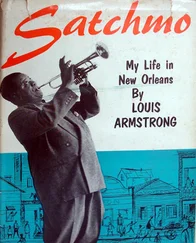Elbert L. Watson - Tennessee at the Battle of New Orleans
Здесь есть возможность читать онлайн «Elbert L. Watson - Tennessee at the Battle of New Orleans» — ознакомительный отрывок электронной книги совершенно бесплатно, а после прочтения отрывка купить полную версию. В некоторых случаях можно слушать аудио, скачать через торрент в формате fb2 и присутствует краткое содержание. Жанр: foreign_prose, История, foreign_edu, foreign_antique, на английском языке. Описание произведения, (предисловие) а так же отзывы посетителей доступны на портале библиотеки ЛибКат.
- Название:Tennessee at the Battle of New Orleans
- Автор:
- Жанр:
- Год:неизвестен
- ISBN:нет данных
- Рейтинг книги:5 / 5. Голосов: 1
-
Избранное:Добавить в избранное
- Отзывы:
-
Ваша оценка:
- 100
- 1
- 2
- 3
- 4
- 5
Tennessee at the Battle of New Orleans: краткое содержание, описание и аннотация
Предлагаем к чтению аннотацию, описание, краткое содержание или предисловие (зависит от того, что написал сам автор книги «Tennessee at the Battle of New Orleans»). Если вы не нашли необходимую информацию о книге — напишите в комментариях, мы постараемся отыскать её.
Tennessee at the Battle of New Orleans — читать онлайн ознакомительный отрывок
Ниже представлен текст книги, разбитый по страницам. Система сохранения места последней прочитанной страницы, позволяет с удобством читать онлайн бесплатно книгу «Tennessee at the Battle of New Orleans», без необходимости каждый раз заново искать на чём Вы остановились. Поставьте закладку, и сможете в любой момент перейти на страницу, на которой закончили чтение.
Интервал:
Закладка:
The fraternal feeling existing between John Coffee and Andrew Jackson ran deep. Each man, completely devoted to the other, was willing to undergo the most rigid personal sacrifice should the other command it. Coffee, “tall, broad-shouldered, gentle in manner, but brave and intelligent,” had executed the key move that bottled up the Creeks at Horseshoe Bend. 5 5 Coffee was born in Prince Edward County, Virginia, June 2, 1772, and died at his home “Hickory Hill” near Florence, Alabama, July 7, 1833. Migrating to Tennessee in 1798 with his widowed mother, Coffee became a successful merchant and surveyor. In 1809 he married Mary Donelson. Their farm on Stone’s River in Rutherford County was 10 miles from the Hermitage. “Letters of General John Coffee to His Wife, 1813-1815,” in Tennessee Historical Magazine , II, (1916), 264-65. Coffee’s granddaughter, Eliza Croom Coffee, described him as possessing a commanding appearance with brilliant black eyes and a dark skin. “His expression,” she wrote, “was quiet and serious, but not sad, and showed deep thought. His manners were courteous and gentle.” Eliza Croom Coffee, “Sketch of the Life of General John Coffee,” Florence, Alabama, 1897 (Script in Manuscript Collection, Tennessee Historical Society, Tennessee State Library and Archives.)
With his usual alacrity, he once again answered his country’s call to duty and ordered his troops to rendezvous in Fayetteville on October 3. Patriotic feeling swept across Tennessee as Coffee’s veterans, with the fire of battle still flashing in their eyes, emerged from the hills, valleys, and hamlets to make the long trek southward for the second time within a year. Most of them were simple countrymen, armed only with their long rifles and knives and attired in the clothing of the frontier. Their pantaloon pockets were filled with bullets. In this manner they responded to the appeal to “come forward … as there (could not) be a moment’s delay.” 6 6 Nashville Whig , September 21, 1814, p. 3.
Jackson’s recall of the Tennessee militia, already schooled in the kind of wilderness warfare which appeared forthcoming, was a wise decision. Against the Creeks these men had subsisted for months in the Alabama back country with only scanty supplies. Their mobility, loyalty, and capacity to move upon their objective with a minimum loss of time made Jackson confident that here was a fighting force well prepared to meet any test.
At Fayetteville, Coffee mustered 2,000 men into service, and organized two divisions under Colonels Robert H. Dyer and Thomas Williamson. At dawn on October 5, the high-spirited troops began their long march southward over the familiar trails which they had traveled the previous year. During the march, their ranks were swelled by the addition of 800 more men, including four East Tennessee companies. Coffee’s men reached Camp Gaines, 70 miles north of Mobile, on October 22, after having traveled 470 miles in 18 days. 7 7 John Coffee to Mary Donelson Coffee, Camp Gaines, October 22, 1814, in Tennessee Historical Magazine , II (1916), 285-86.
That autumn trip had been accomplished with a minimum of sickness and no deaths, and the men were inspired with the feeling that Nature’s blessing was upon them, however arduous the campaign might be.
With the arrival of General Coffee, Jackson was ready to move against the Spaniards at Pensacola. He did so with an awesome display of force on November 7, and within a few hours declared the town in the possession of the United States. With this blow, although it accomplished little in the way of military success, Jackson confirmed his “reputation as a man who could act boldly, assume vast responsibilities, and move rapidly.” 8 8 C. S. Forester, “Victory of New Orleans,” in American Heritage VIII, (1957), 8.
Having quieted the aggressive intentions of the Spaniards and Creeks, Jackson quickly returned to Mobile where he expected a British attack at any moment. Coffee, in the meantime, was instructed to proceed at once to the mouth of Sandy Creek, about 20 miles north of Baton Rouge.
At this point of the campaign, Jackson had no idea that New Orleans would be the focal point of a British invasion. He was convinced that the landing would come somewhere to the east, and considered that logically the invaders would align themselves with the hostile Creeks and push through the back country to the Mississippi River near Baton Rouge. There Coffee would be in a position to repulse whatever force was thrown against him. Unknown to Old Hickory, however, the British had no immediate designs upon Baton Rouge. At that moment, a great invasion fleet of some fifty armed vessels and over ten thousand veterans of the Napoleonic wars were being organized at Negril Bay in Jamaica: its objective being New Orleans. 9 9 N. Floyd McGowin, “Some Aspects of Waning British Influence in the Middle Gulf Region,” in The Alabama Review , IX (1956), 166-67.
However uncertain Jackson’s initial operations along the coast may have seemed to the uneasy citizens of New Orleans, it was soon evident that he did not intend to allow the city to go completely undefended. To further bolster his army and make his coastal defenses adequate, Jackson now called upon the trusted William Carroll. Carroll was only 26 years of age at this time but his courage and intelligence had already elevated him to the rank of Major General of the Second Tennessee Division. 10 10 Born near Pittsburg, Pennsylvania, March 3, 1788, Carroll came to Nashville in 1810 to open a mercantile store. His fondness for studying military tactics endeared him to Andrew Jackson, then Major General of the Second Tennessee Division encompassing West (now Middle) Tennessee. When Jackson resigned in 1813 to command the United States Army in defense of the Southern frontier, Carroll received the appointment. Later, as Governor of Tennessee, Carroll distinguished himself for his frugality and business acumen.
A veteran of the Creek campaign, Carroll made no effort to conceal his destination in his strongly worded appeal for volunteers:
Should any foreign power obtain a permanent possession of the City of New Orleans and the mouth of the Mississippi we may bid farwell (sic) to all our prosperity and anticipated greatness. Let our enemy … place one foot in Louisiana and we are at once bestrode by a colossus who has too long rested the other in Canada; in fine let him command the Mississippi River, and we become the most dependent, degraded, and miserable people on earth.... You may add the immortal glory of conquering the boasted troops of a Lord Wellington. 11 11 Nashville Clarion , November 1, 1814, p. 3.
The 3,000 militiamen who met with Carroll in Nashville on November 13 were similar in appearance to those of Coffee. One eyewitness remarked that they were “as fine looking men as any we ever saw, and a considerable part of them (were) well armed, with muskets and rifles.” 12 12 The Clarion and Tennessee State Gazette , November 22, 1814, p. 3.
Another observer noted that they “have come forward with that promptitude which has heretofore characterized the state.... They are generally provided with arms, etc. at their own expense.” 13 13 Nashville Whig , November 16, 1814, p. 3.
Six days after they gathered in Nashville, the troops embarked on boats for New Orleans. The main diversion offered the Tennesseans during the slow, tedious trip down the Cumberland, Ohio and Mississippi rivers was the daily drilling which Carroll and his two subordinates, Brigadier Generals Thomas Coulter and Bird Smith, gave the recruits. There had been no time for training prior to their hasty departure.
Enroute the militiamen were cheered when they overtook a New Orleans-bound keelboat laden with muskets. Thomas L. Servoss, a prominent Natchez businessman, was responsible for this fortunate occurrence. While visiting New York during the summer of 1814, he was informed by a government official that New Orleans was considered the likely site for a British invasion. Concerned for his family’s welfare, Servoss had left for home immediately. At Pittsburg he boarded one of two keelboats headed for New Orleans with large quantities of arms and ammunition. Experienced in navigation himself and familiar with the route, Servoss prevailed upon the captain to depart earlier than was scheduled. By doing so, Servoss unintentionally insured that Carroll’s troops were fully armed before their trip was completed. 14 14 Nashville Daily Gazette , November 10, 1858, p. 2. As the story goes, all of the Tennessee troops, including those of Coffee, were fully armed by December 21. The second keelboat, however, did not arrive until some time after the battle of January 8, leaving the Kentuckians, who arrived January 4, only partially armed.
Интервал:
Закладка:
Похожие книги на «Tennessee at the Battle of New Orleans»
Представляем Вашему вниманию похожие книги на «Tennessee at the Battle of New Orleans» списком для выбора. Мы отобрали схожую по названию и смыслу литературу в надежде предоставить читателям больше вариантов отыскать новые, интересные, ещё непрочитанные произведения.
Обсуждение, отзывы о книге «Tennessee at the Battle of New Orleans» и просто собственные мнения читателей. Оставьте ваши комментарии, напишите, что Вы думаете о произведении, его смысле или главных героях. Укажите что конкретно понравилось, а что нет, и почему Вы так считаете.












